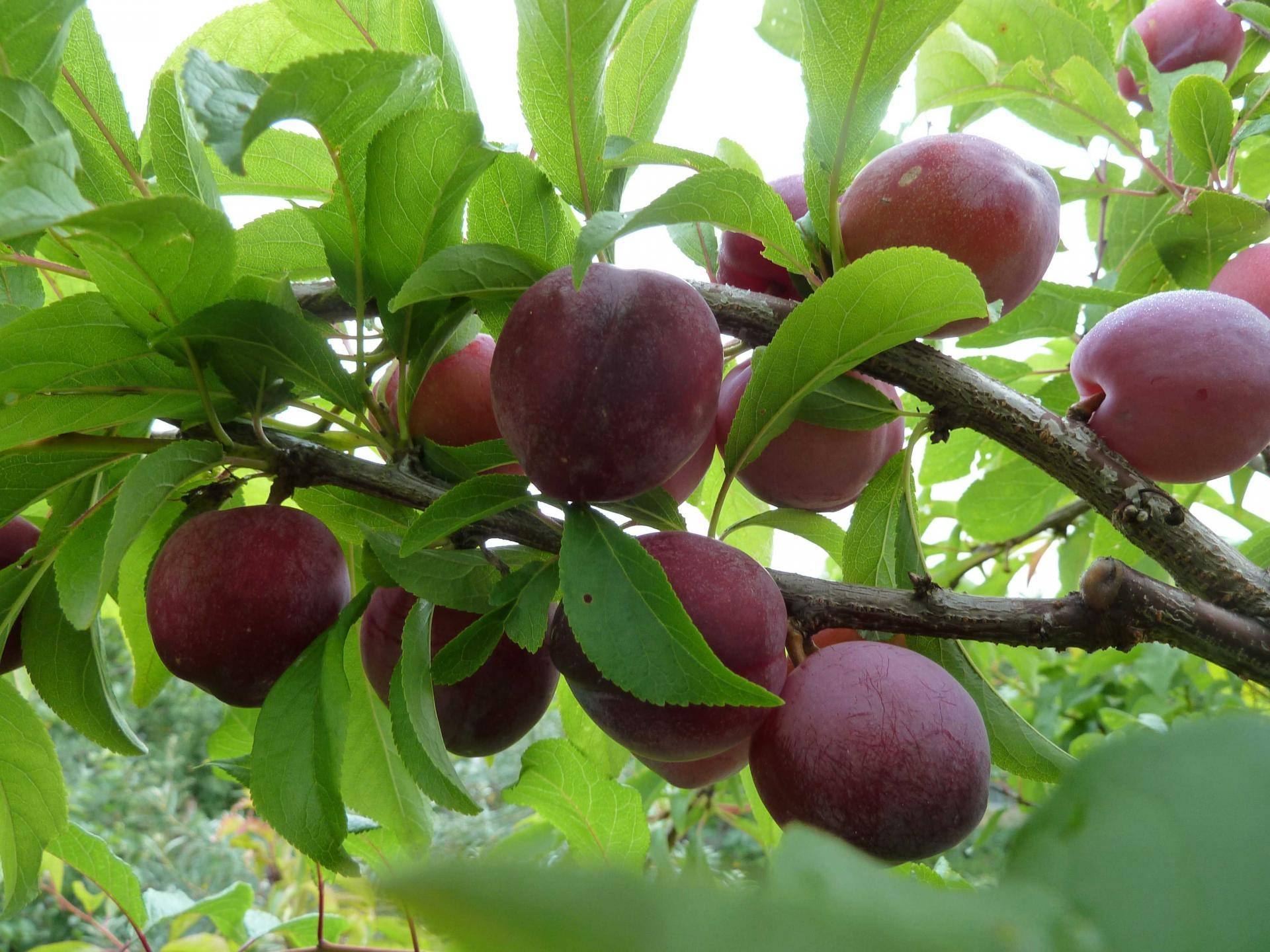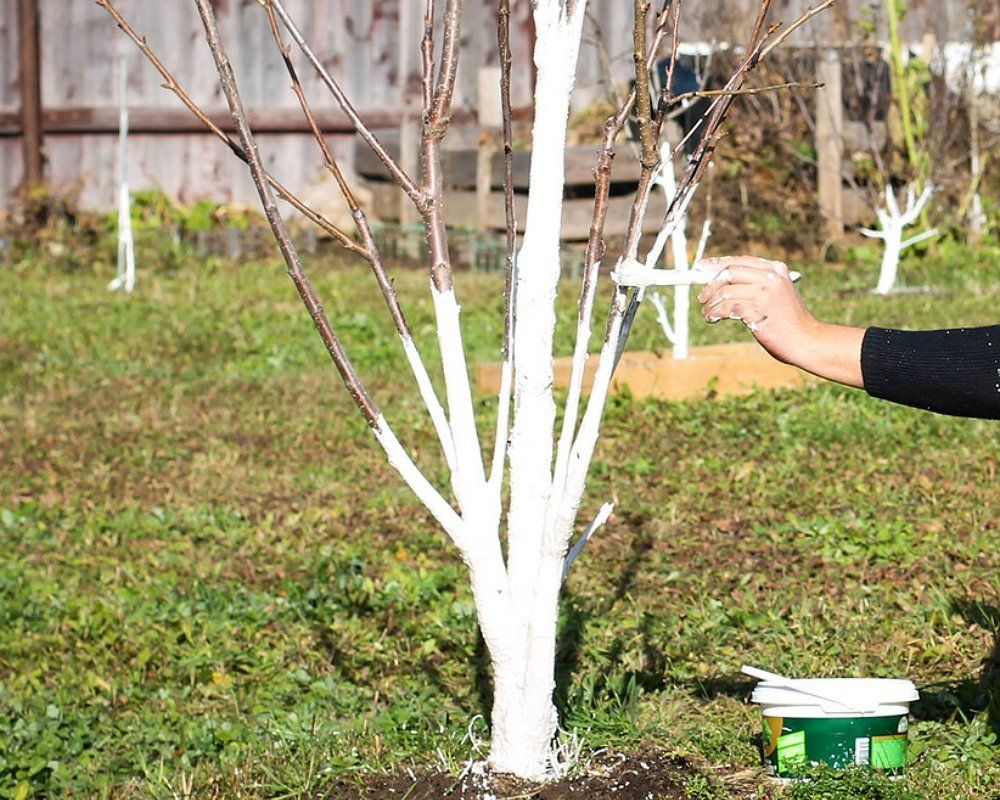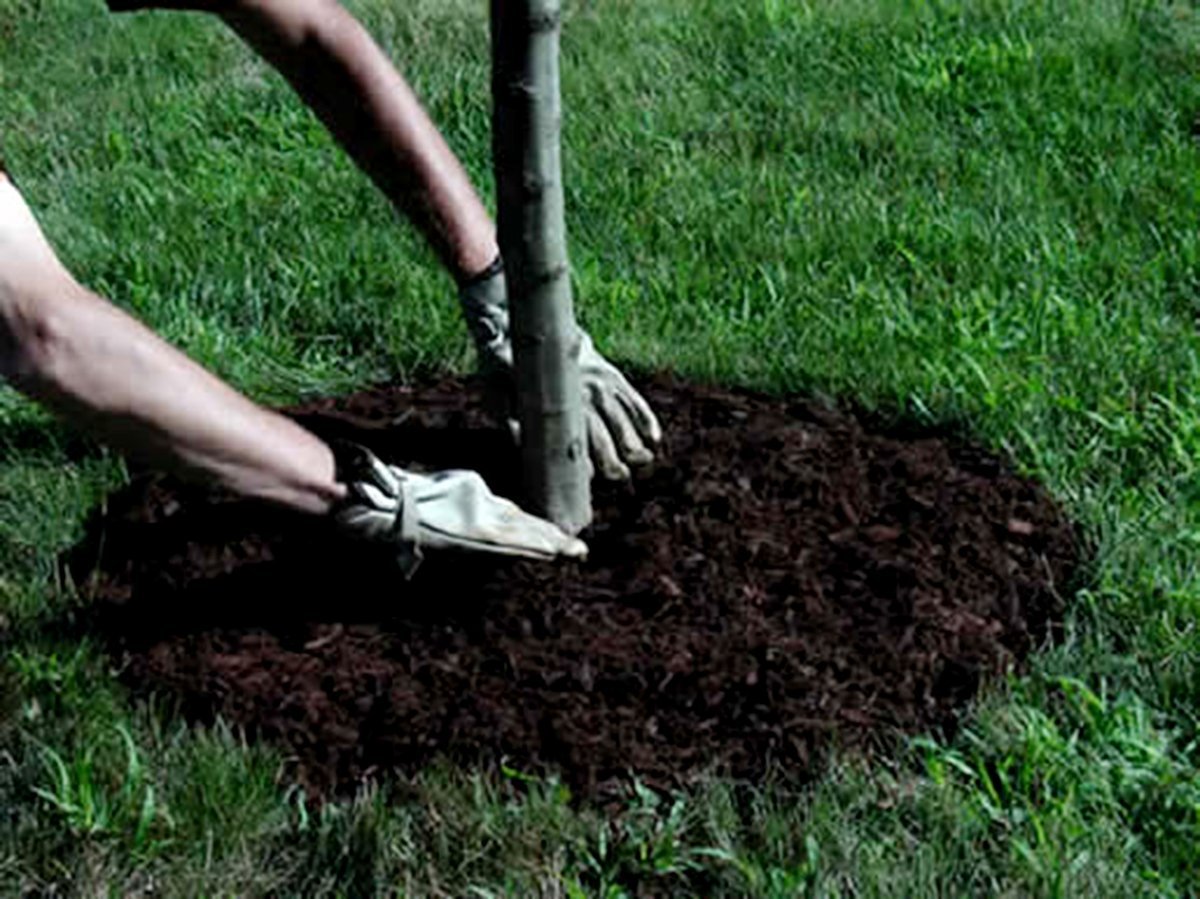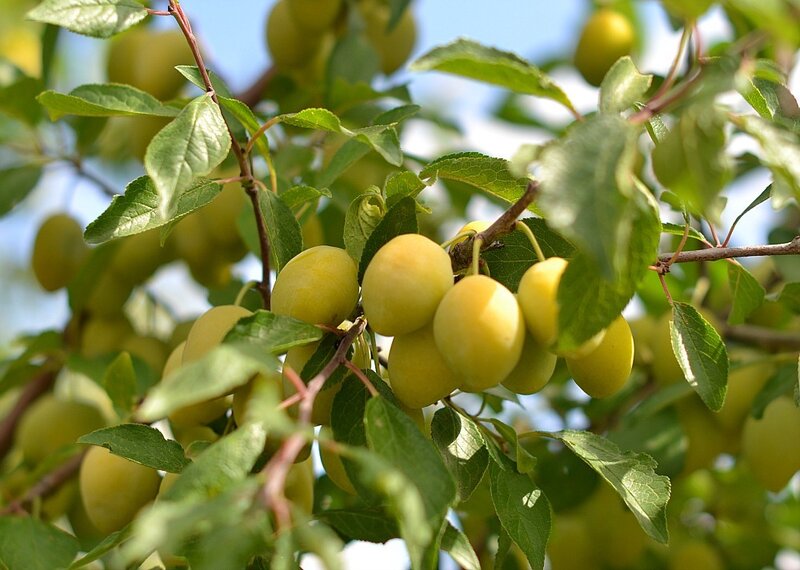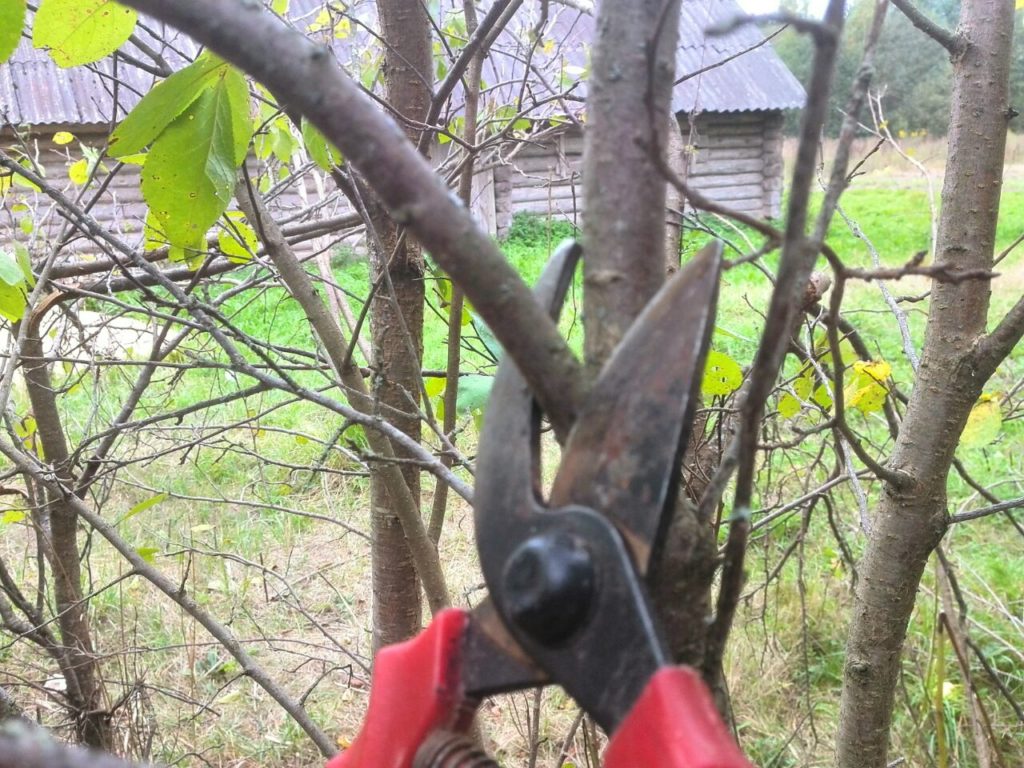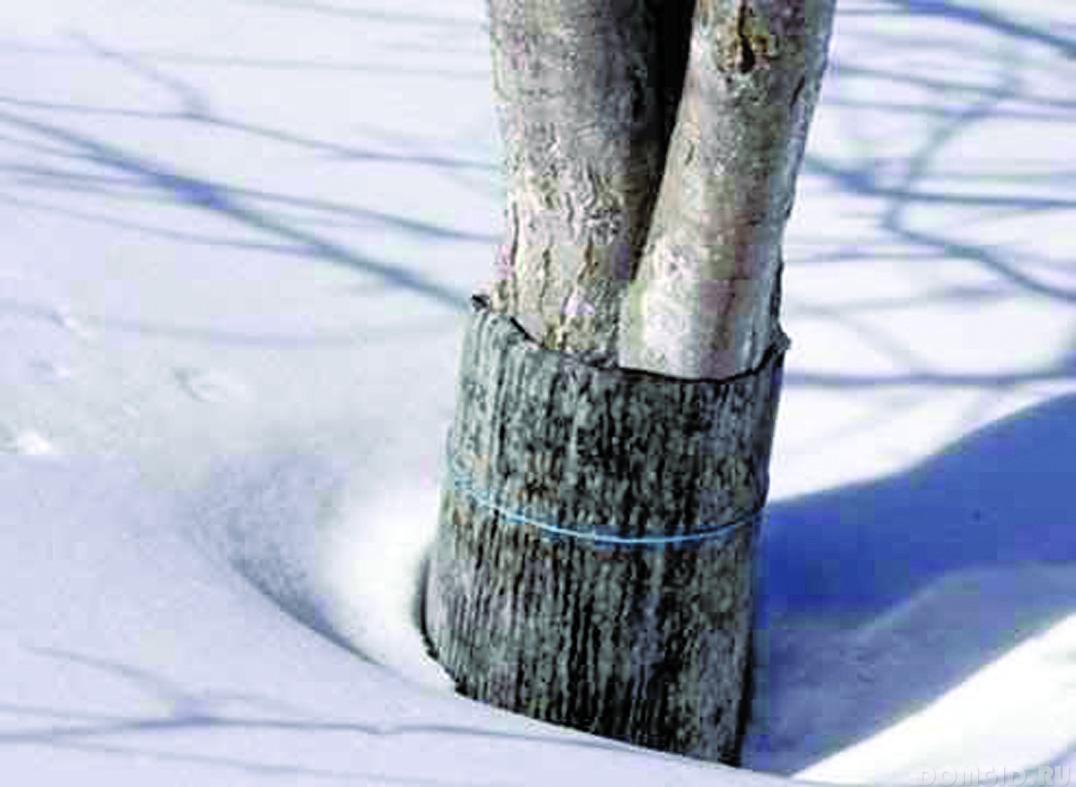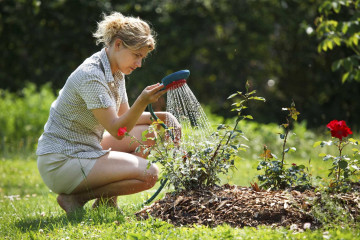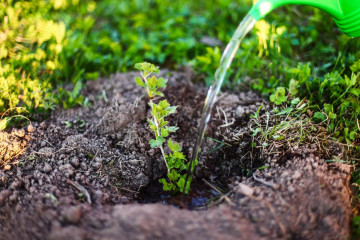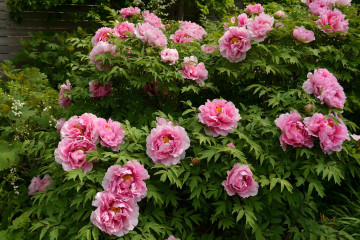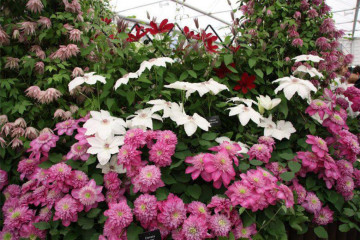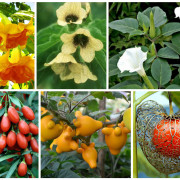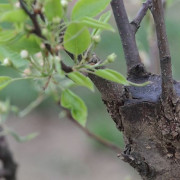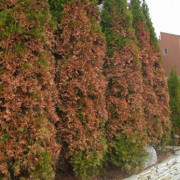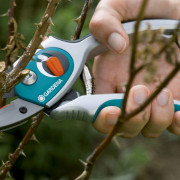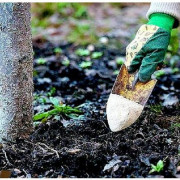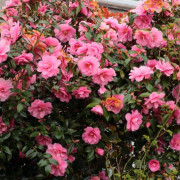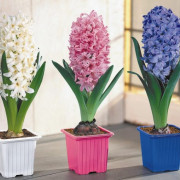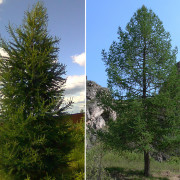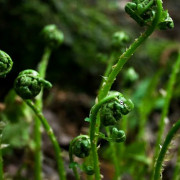Plum care during fruiting, top dressing in summer and autumn
Content:
Many novice gardeners do not dare to plant a plum in their country house, believing that the fruit tree is not hardy enough and will not survive the frosty winter. Knowing how to care for plums, providing them with nutrients and properly preparing them for wintering, the culture can be successfully grown not only in the middle lane and the Moscow region, but also in the regions of Siberia and the Urals.
Spring plum care activities
Plum care should be started immediately after the snow melts, before the sap flow begins. The purpose of spring work is crown formation, disease prevention, fertilization to increase yields.
Sanitary pruning of plums in spring
The event is carried out as early as possible before the swelling of the kidneys. To work you will need tools: a sharply sharpened pruner, a delimber, a garden saw.
Process technology:
- cut off dry and broken branches, cut the damaged parts to the base;
- remove shoots growing inside the crown and at an acute angle, forks of branches that can break under the weight of the fruit;
- cut branches growing in a vertical direction (tops);
- destroy root growth;
- open wounds are treated with a 3% solution of copper sulfate and covered with garden varnish.
Whitewashing the trunk
The work is carried out in early April, when the air temperature warms up to + 5 ... + 7 ° С. The whitewashing of the trunk is carried out to protect the bark of the tree from sunburn, protect it from temperature extremes and repel insect pests.
Specialty stores sell chalk and acrylic compounds containing antibacterial and reflective substances. You can prepare a solution for whitewashing plum trees yourself. The most commonly used components of the mixture:
- base - slaked or quicklime, chalk, fluff lime;
- fixer - casein glue, paste, PVA glue, manure, clay, laundry soap;
- antiseptic - 200-300 g of copper sulfate (if last year the tree was affected by the disease).
Whitewashing recipes:
- 3 kg of slaked lime is poured into 10 liters of water, 100 g of PVA glue, an antiseptic are added, the solution is allowed to stand for several hours;
- 2 kg of slaked lime, 1 kg of manure or clay, 250 g of copper sulfate per bucket of water;
- for 8 liters of water, take 2 kg of fluffy lime, 100 g of casein glue, 400 g of copper sulfate, dissolved in a liter of hot water.
The mixture should be homogeneous without lumps, with the consistency of sour cream. Sometimes table salt is added to the solution (if there is moss and lichens on the bark of the tree) or 500 g of wood ash to repel parasitic insects.
Slaked lime should be used with caution. In order not to burn the bark, it is dissolved in water and wait several hours until the reaction is over (quenched). Work with the substance is carried out in protective gloves, a mask and goggles.
The plum stem and the lower part of the skeletal branches are to be whitewashed to a level of 1.5 m from the ground. Before applying the solution, clean the trunk from the remnants of old whitewash and dead bark with a sharp scraper. The resulting bald spots are treated with a fungicide or an ash-and-soap solution, covered with garden varnish.
The work is performed on a dry cloudy day using a wide flat brush or a fur roller. The tree is whitewashed with up and down hand movements. To prevent the whitewash from crumbling, the applied layer should not exceed a thickness of 3 mm.
When and how to make top dressing under the plum in spring
The first 1-2 years after planting, young seedlings can not be fed, they have enough nutrients laid in the planting pit. The root system of a young tree is poorly developed, an excess of fertilizer can be harmful.
The first feeding of adult plum trees is carried out during the swelling of the buds with a nitrogen-containing fertilizer. In 10 l of water, 30 g of urea and 30 g of potassium sulfate are dissolved.
In the spring, digging the soil is carried out in the near-stem circle of the plum, half a shovel deep, so as not to damage the root system. Along the way, the soil can be fertilized by introducing 8-10 kg of rotted compost or humus. Organic fertilizers contain a complex of nutrients and restore the structure of the soil for the normal development and fruiting of the crop.
After flowering, a second feeding is carried out. For 10 liters of water, take 50 g of nitrophoska or 40 g of urea + 30 g of liquid potassium humate.
Summer activities
Plum care in the summer consists in agrotechnical methods that prevent fruit tree diseases and premature shedding of fruits.
Watering and mulching
Plum does not tolerate drought well. The root system of the tree is located superficially, with a lack of moisture, full-fledged fruit filling does not occur. Watering the plum tree is carried out rarely, but abundantly, pouring 30-40 liters of water under the tree in the morning or shortly before sunset.
After each watering, the soil in the near-trunk circle is weeded, loosened, mulched with peat or humus with a layer of 10-15 cm. Mulch is very useful for plums: it nourishes the plant, prevents the formation of a crust on the soil surface, inhibits the growth of weeds. Mulching improves the structure of the soil (makes it more breathable) and protects the root system of the plum from overheating in the heat.
Top dressing
At the beginning of June, the first summer feeding is carried out so that the fruits are better set. The tree is sprayed with a 0.5% urea solution. Foliar dressing - spraying fertilizer onto leaves and shoots. This type of fertilization quickly saturates the tree with useful elements and protects the crop from diseases.
How can you fertilize a plum in July, when the fruit ripens process: take 30 g of urea and 40 g of nitroammofoska per 10 liters of water. Under an adult tree, 30 liters of diluted fertilizer are applied.
Top dressing of plums in the middle of summer depends on the condition of the tree. The plant has been grown in one place for many years, the soil is gradually depleted, and nutrition becomes insufficient. The plum is difficult to tolerate the lack of nutrients. A grayish bloom with a brown edging, rusty spots may appear on the leaves, and a slowdown in shoot growth is observed. Alarming is the fall of foliage and ovaries, the formation of small fruits.
The lack of macronutrients manifests itself as follows:
- nitrogen deficiency - foliage of a pale green or yellowish color, premature fall and deterioration of the taste of the fruit;
- lack of phosphorus - early fall of foliage, poor setting and shrinking of fruits;
- the tree lacks potassium - thin weak shoots appear, the root system does not develop well.
Signs that the plant is deficient in micronutrients:
- pale foliage - lack of potassium;
- falling of small yellow fruits, folding of leaves into a tube - the tree does not have enough calcium, boron;
- thinning of shoots, disease leaves - zinc deficiency;
- dying off of the upper shoots - lack of copper;
- leaves acquire a reddish tint with green veins, dry out prematurely and fall off - magnesium deficiency.
How can you feed a plum that needs macro- and microelements? The culture is watered monthly during the growing season with diluted complex mineral fertilizers. Trees respond positively to the introduction of wood ash containing potassium, calcium, magnesium and sodium into the soil of the trunk circle. At the same time, ash repels insect pests, increases resistance to diseases and reduces soil acidity.
Autumn care
The most crucial period is the care of plums in the fall. It is necessary to support the tree during the harvest, make timely pruning, and take measures to prepare the plant for the cold season.
Feeding plums during fruiting
Depending on the variety, the plum can ripen in July, August or September. How to feed the plum during fruiting:
- 40 g of superphosphate is dissolved in hot water, the volume of the liquid is brought to 10 l and 30 g of potassium sulfate is added;
- spraying with a solution of boric acid (10 g per 10 l of water) helps the full development of the fruit;
- watering under the root with a solution of potassium permanganate (3 g per bucket of water) prevents damage to the fruit on the tree;
- watering with yeast tincture accelerates fruit ripening;
- bone meal with wood ash in a ratio of 1: 2 is scattered in the trunk circle and sealed by loosening into the soil to strengthen the root system, prevent the development of rot.
On sandy soils, fertilizers containing phosphorus are applied with caution.
Autumn pruning
The timing of the event depends on the region where the plum is grown. In the middle lane (Moscow region), trees are cut after the foliage has fallen. In Siberia and the Urals, cold weather comes early and work is done 2-3 weeks earlier. It is important to prune before the onset of frost so that the tree has time to recover before the onset of cold weather.
During the summer period, the tree grows strongly; without crown formation, fruiting will decrease. What autumn pruning gives:
- an increase in the growth of shoots for the next year;
- accelerated maturation of wood increases the winter hardiness of the crop;
- shortened branches do not break under the weight of snow;
- a thinned crown is better ventilated, less affected by diseases and pests.
Young shoots are removed from plums, branches are shortened, weak shoots growing inside the tree are cut out.
In two to three summer seedlings, the skeletal branches are cut by a third, the side branches are shortened by 15-20 cm.
In fruiting trees, diseased, lichen-covered and broken branches are removed. The main shoots are shortened, the crown is thinned out, cutting out weak branches.
The event is held in mid-late October, after the leaves have fallen off. The recipe for making whitewash is the same, you can include deterrents from wild rodents and hares in the composition.
Preparing fruit trees for wintering
Plum is a southern fruit tree and needs help to survive the frosty winter.When preparing a plant for wintering, the following activities are performed:
- remove plant residues from the trunk circle and take it out of the site or burn it;
- inspect the bark of the tree, remove dead areas;
- cracks in the trunk are covered with garden pitch (pests often hibernate in them);
- spray the tree with insecticides using Bordeaux mixture, "Fufanon", "Aktaru".
After harvesting, the plum needs to be fed with phosphorus-potassium fertilizers. 30 g of superphosphate and 20 g of potassium magnesium or 20 g of potassium monophosphate are introduced into the trunk circle 3 weeks before the onset of cold weather. Fertilizers in granules dissolve longer and have a prolonged effect.
When digging, add compost or humus. Plum prefers to grow on alkaline soils; dolomite flour is used to deoxidize the soil. Mulching the trunk circle with peat or humus is carried out. It is not advisable to use straw; rodents make nests in them for the winter.
In regions with frosty, snowless winters, the trunk circle is covered with burlap or spunbond. In winter, the delicious bark of the tree attracts hares and mice. Young seedlings can be especially affected. The trunks of trees are covered with spruce branches, roofing felt, and surrounded by a metal mesh.
Plums require care all year round to get harvests annually. Correct pruning, timely fertilization and preparation of the plant for winter are the basic rules of agricultural cultivation. Having picked up a collection of plum varieties with different ripening periods in the garden, you can provide yourself and your loved ones with delicious fruits from mid-July to early October.
